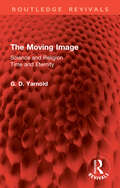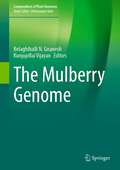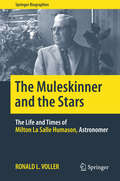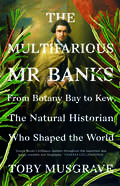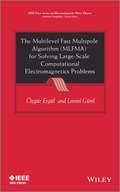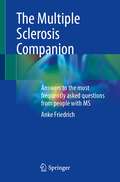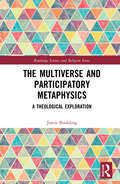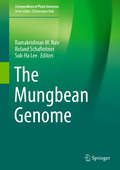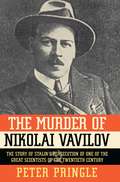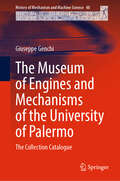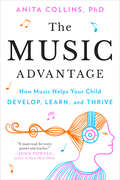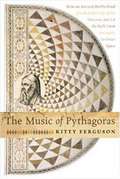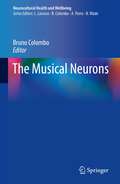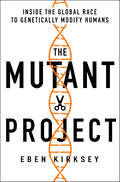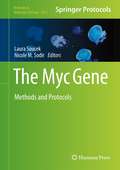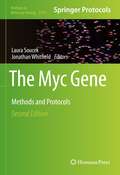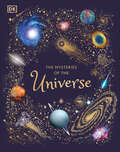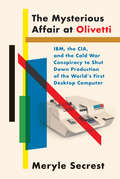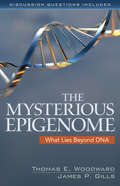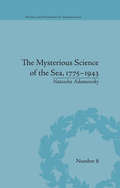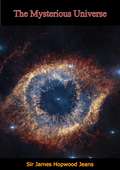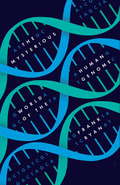- Table View
- List View
The Moving Image: Science and Religion. Time and Eternity (Routledge Revivals)
by G. D. YarnoldResearch scientist and university teacher, Anglican clergyman and warden of a great theological library, the author had previously lectured and written extensively on religious and scientific questions. In The Moving Image, originally published in 1966, he deals with a number of related problems, some old and some new, on the borderland where science, philosophy and theology meet. How does our sense of time arise, and what does it mean? Is the universe an accident and human life without purpose, or is a doctrine of creation a necessary counterpart to the teachings of evolution? What does it mean in a scientific age to claim that the eternal God works out his purpose in cosmic and organic process, revealing himself in human history? Does the classical doctrine of the Incarnation do justice to Christ’s involvement as a human person in the travail of the real world as we know it?These and other questions are looked at afresh in the light of a carefully articulated understanding of the relation of time to eternity, which draws together the contributions of the ancient world, the insights of existentialists and linguistic philosophy, and the most recent trends in natural science. On this basis, skilfully argued and cogently presented, the author examines the problems of divine omniscience in relation to human freewill and neurophysiological determinism, and deals in a fresh manner with the great questions of Christology and the hope of eternal life. The result is a work of fascinating interest, in which bold metaphysical views are advanced with full awareness of the pitfalls to which such thinking was exposed at the time. Of interest to philosophers and theologians at the time, as well as the lay reader, today it can be read in its historical context.
The Mulberry Genome (Compendium of Plant Genomes)
by Belaghihalli N. Gnanesh Kunjupillai VijayanThis book is the first comprehensive compilation of current knowledge on mulberry (Morus L.) covering botany, cytogenetics, biodiversity, genetics and breeding, tissue culture and genetic transformation, biotic and abiotic stresses, molecular mapping, QTL identification, whole genome sequencing and elucidation on functional genomics. As mulberry is one of the most economically important trees in Asian countries, it has attracted the attention of both academicians as well as industrialists. Being highly heterozygous due to long juvenile life coupled cross pollination among species, the genetics of this important crop species is yet to be unravelled. Nonetheless, the recent success of sequencing the genomes of haploid and diploid domesticated species has ushered in an era of intense molecular and genetic research to understand this crop well for its better utilization for mankind.In this book, efforts have been made to bring together key information on origin and distribution, taxonomy, morphological features, economic importance, abiotic stress responses, disease and pest resilience, current breeding strategies and their constraints, progress and prospects of gene mapping, elucidation of genes controlling metabolic and physiological pathways, and their utilization in crop improvement which are elaborated in about 250 pages over 13 chapters authored by globally leading experts on the species presented.This book is useful to the sericulture community in the world in general and students, teachers, and scientists in the academia for forage and fruit production, genetics, breeding, pathology, entomology, physiology, molecular genetics, in vitro culture and genetic engineering, and structural and functional genomics. This book is also useful to seed and biofuel industries.
The Muleskinner and the Stars
by Ronald L. VollerThis is the story of the astronomer Milton La Salle Humason, whose career was integral to developing our understanding of stellar and universal evolution and who helped to build the analytical basis for the work of such notable astronomers and astrophysicists as Paul Merrill, Walter Adams, Alfred Joy, Frederick Seares, Fritz Zwicky, Walter Baade and Edwin Hubble. Humason's unlikely story began on the shores of the Mississippi River in Winona, Minnesota, in 1891 and led to the foot of Mount Wilson outside Los Angeles, California, twelve years later. It is there where he first attended summer camp in 1903 and was captivated by its surroundings. The mountain would become the backdrop for his life and career over the next six decades as he helped first build George Ellery Hale's observatory on the summit and then rose to become one of that institution's leading figures through the first half of the twentieth century. The story chronicles Humason's life on Mount Wilson, from his first trip to the mountain to his days as a muleskinner, leading teams of mules hauling supplies to the summit during the construction of the observatory, and follows him through his extraordinary career in spectroscopy, working beside Edwin Hubble as the two helped to reconstruct our concept of the universe. A patient, knowledgeable and persistent observer, Humason was later awarded an honorary doctorate for his work, despite having no formal education beyond the eighth grade. His skill at the telescope is legendary. During his career he photographed the spectra of stars, galaxies and other objects many thousands of times fainter than can be seen with the naked eye and pushed the boundary of the known universe deeper into space than any before him. His work, which included assisting in the formulation of Hubble's Law of redshifts, helped to set the field of cosmology solidly on its foundation. Milton Humason was one of the most charismatic characters in science during the first half of the 20th century. Uneducated, streetwise, moonshining, roguish, humble and thoroughly down to earth, he rose by sheer chance, innate ability and incredible will to become the leading deep space observer of his day. "The Renaissance man of Mount Wilson," as Harlow Shapley once referred to him, Humason's extraordinary life reminds us that passion and purpose may find us at any moment.
The Multifarious Mr. Banks: From Botany Bay to Kew, The Natural Historian Who Shaped the World
by Toby MusgraveA fascinating life of Sir Joseph Banks which restores him to his proper place in history as a leading scientific figure of the English Enlightenment As official botanist on James Cook's first circumnavigation, the longest-serving president of the Royal Society, advisor to King George III, the "father of Australia," and the man who established Kew as the world's leading botanical garden, Sir Joseph Banks was integral to the English Enlightenment. Yet he has not received the recognition that his multifarious achievements deserve. In this engaging account, Toby Musgrave reveals the true extent of Banks’s contributions to science and Britain. From an early age Banks pursued his passion for natural history through study and extensive travel, most famously on the HMS Endeavour. He went on to become a pivotal figure in the advancement of British scientific, economic, and colonial interests. With his enquiring, enterprising mind and extensive network of correspondents, Banks’s reputation and influence were global. Drawing widely on Banks's writings, Musgrave sheds light on Banks’s profound impact on British science and empire in an age of rapid advancement.
The Multilevel Fast Multipole Algorithm (MLFMA) for Solving Large-Scale Computational Electromagnetics Problems
by Ozgur Ergul Levent GurelThe Multilevel Fast Multipole Algorithm (MLFMA) for Solving Large-Scale Computational Electromagnetic Problems provides a detailed and instructional overview of implementing MLFMA. The book:Presents a comprehensive treatment of the MLFMA algorithm, including basic linear algebra concepts, recent developments on the parallel computation, and a number of application examplesCovers solutions of electromagnetic problems involving dielectric objects and perfectly-conducting objectsDiscusses applications including scattering from airborne targets, scattering from red blood cells, radiation from antennas and arrays, metamaterials etc.Is written by authors who have more than 25 years experience on the development and implementation of MLFMAThe book will be useful for post-graduate students, researchers, and academics, studying in the areas of computational electromagnetics, numerical analysis, and computer science, and who would like to implement and develop rigorous simulation environments based on MLFMA.
The Multiple Sclerosis Companion: Answers to the most frequently asked questions from people with MS
by Anke FriedrichThe book provides competent assistance to all those affected by Multiple Sclerosis to better understand the disease and educates them about current diagnostic methods and treatment approaches. With independent information, the guidebook provides the key to a self-determined life with the disease. Complex medical facts such as the malfunctioning immune system or MRI findings are explained in understandable words and accompanying drawings. This companion also raises awareness beyond conventional medicine to take into account important influencing environmental factors.The author provides answers to the many questions that are asked again and again in the doctors’ practices and cannot always be answered to this extent and with this clarity due to time restrictions. For this reason, it is a highly helpful tool to both MS practitioner and patient.The book is structured as follows:What is MS? - How the central nervous system is structured - What happens when the nervous system is misdirected - MS relapse and typical symptoms - The path to diagnosis - An excursion into our immune system - The MRI findings - Why lumbar puncture - What to do during an MS relapse - I'm fine, why therapy? - MS and the desire to have children - What can I do myself: Nutrition, Vitamin D, intestine and microbiome.
The Multiverse and Participatory Metaphysics: A Theological Exploration (Routledge Science and Religion Series)
by Jamie BouldingThis book offers a new theological approach to the multiverse hypothesis. With a distinctive methodology, it shows that participatory metaphysics from ancient and medieval sources represents a fertile theological ground on which to grapple with contemporary ideas of the multiverse. There are three key thinkers and themes discussed in the book: Plato and cosmic multiplicity, Aquinas and cosmic diversity, and Nicholas of Cusa and cosmic infinity. Their insights are brought into interaction with a diverse range of contemporary theological, philosophical, and scientific figures to demonstrate that a participatory account of the relationship between God and creation leads to a greater continuity between theology and the multiverse proposal in modern cosmology. This is in contrast to existing work on the subject, which often assumes that the two are in conflict. By offering a fresh way to engage theologically with multiverse theory, this book will be a unique resource for any scholar of Religion and Science, Theology, Metaphysics, and Cosmology.
The Mungbean Genome (Compendium of Plant Genomes)
by Ramakrishnan M. Nair Roland Schafleitner Suk-Ha LeeThis book reports on the current global status of mungbean and its economic importance. Mungbean (Vigna radiata)—also called green gram—is an important food and cash crop in the rice-based farming systems of South and Southeast Asia, but is also grown in other parts of the world. Its short duration, low input requirement and high global demand make mungbean an ideal rotation crop for smallholder farmers. The book describes mungbean collections maintained by various organizations and their utilization, especially with regard to adapting mungbean to new environments. It provides an overview of the progress made in breeding for tolerance to biotic and abiotic stresses; nutritional quality enhancement including genomics approaches; and outlines future challenges for mungbean cultivation. In addition, genomic approaches to evaluating the evolutionary relationship between Vigna species and addressing questions concerning domestication, adaptation and genotype–phenotype relationships are also discussed
The Murder of Nikolai Vavilov
by Peter PringleIn The Murder of Nikolai Vavilov, acclaimed journalist and author Peter Pringle recreates the extraordinary life and tragic end of one of the great scientists of the twentieth century. In a drama of love, revolution, and war that rivals Pasternak's Dr. Zhivago, Pringle tells the story of a young Russian scientist, Nikolai Vavilov, who had a dream of ending hunger and famine in the world. Vavilov's plan would use the emerging science of genetics to breed super plants that could grow anywhere, in any climate, in sandy deserts and freezing tundra, in drought and flood. He would launch botanical expeditions to find these vanishing genes, overlooked by early farmers ignorant of Mendel's laws of heredity. He called it a "mission for all humanity." To the leaders of the young Soviet state, Vavilov's dream fitted perfectly into their larger scheme for a socialist utopia. Lenin supported the adventurous Vavilov, a handsome and seductive young professor, as he became an Indiana Jones, hunting lost botanical treasures on five continents. In a former tsarist palace in what is now St. Petersburg, Vavilov built the world's first seed bank, a quarter of a million specimens, a magnificent living museum of plant diversity that was the envy of scientists everywhere and remains so today. But when Lenin died in 1924 and Stalin took over, Vavilov's dream turned into a nightmare. This son of science was from a bourgeois background, the class of society most despised and distrusted by the Bolsheviks. The new cadres of comrade scientists taunted and insulted him, and Stalin's dreaded secret police built up false charges of sabotage and espionage. Stalin's collectivization of farmland caused chaos in Soviet food production, and millions died in widespread famine. Vavilov's master plan for improving Soviet crops was designed to work over decades, not a few years, and he could not meet Stalin's impossible demands for immediate results. In Stalin's Terror of the 1930s, Russian geneticists were systematically repressed in favor of the peasant horticulturalist Trofim Lysenko, with his fraudulent claims and speculative theories. Vavilov was the most famous victim of this purge, which set back Russian biology by a generation and caused the country untold harm. He was sentenced to death, but unlike Galileo, he refused to recant his beliefs and, in the most cruel twist, this humanitarian pioneer scientist was starved to death in the gulag. Pringle uses newly opened Soviet archives, including Vavilov's secret police file, official correspondence, vivid expedition reports, previously unpublished family letters and diaries, and the reminiscences of eyewitnesses to bring us this intensely human story of a brilliant life cut short by anti-science demagogues, ideology, censorship, and political expedience.
The Muscular System: The Insider's Guide to the Body
by Katherine WhiteNow more than ever, teens are proactive in their attempts to be healthy and fit. This book guides teens in understanding all of the components of their muscular systems and the relationship between muscles and the rest of their bodily functions, such as digestion and heartbeat. Includes intriguing facts, ways to keep muscles healthy, and discussions on muscular diseases.
The Museum of Engines and Mechanisms of the University of Palermo: The Collection Catalogue (History of Mechanism and Machine Science #48)
by Giuseppe GenchiThe book describes the collection of the Museum Engines and Mechanisms of the University of Palermo, Italy, one of the most important and heterogeneous collections of engines and mechanisms in Europe, the first one in Italy to be awarded as Mechanical Engineering Heritage Collection by the American Society of Mechanical Engineers. Thanks to its numerous items, this book showcases the evolution of fluid machinery and applied mechanics, from steam engines up to turbojet engines, as well as hybrid system, giving several technical and historical information about its most important engines, which are described in detail through pictures and original drawings. The Museum preserves and makes freely available this almost unique collection of more than 300 engines, didactic models, and technical equipment, including various unique exemplars, continuously enhanced thanks to donations and through restoration activities carried out in a dedicated laboratory of the Museum. As a result of a great deal of philological research carried out on the documents collected in the Museum’s archive, as well as in other institutional and corporate historical archives, this book serves as the reference tool of the collection and, more generally, of the Museum itself. Despite the technical subject and the academic environment in which it was created, the catalogue is realized to be read even by non-experts, offering different levels of detail, the first of which is the historical, economic and, in certain cases, even sporting context related to an engine, such as the vehicle for which it was designed and used.
The Music Advantage: How Music Helps Your Child Develop, Learn, and Thrive
by Dr. Anita CollinsAn expert in cognitive development and music education reveals the remarkable and surprising benefits that playing--or even appreciating--music offers to children.The latest cognitive research has revealed something extraordinary: learning music and listening to music can grow and repair our brains at any age. Here, Dr. Anita Collins explains how music has the potential to positively benefit almost all aspects of a child's development, whether it's through formal education or mindful appreciation; simply clapping in time can assist a young child who is struggling with reading. It turns out that playing music is the cognitive equivalent of a full-body workout. Dr. Collins lays out the groundbreaking research that shows how playing an instrument can improve language abilities, social skills, concentration, impulse control, emotional development, working memory, and planning and strategy competence, from infancy through adolescence. She also provides real-life stories to show the difference that music learning can make, as well as practical strategies for parents and educators to encourage a love of music in their kids.
The Music of Pythagoras: How an Ancient Brotherhood Cracked the Code of the Universe and Lit the Path from Antiquity to Outer Space
by Kitty FergusonFerguson, a musician and author of several books on the history of science, presents an entertaining, erudite history of the work of Pythagoras, from its murky origins in the sixth century B.C.E. to the present. She explores the use of Pythagorean mathematics in Greek, Roman, Arabic and Western European intellectual tradition in a clear, unbiased manner, with many diagrams and explanations to aid those for who haven't kept up their high school math.
The Musical Neurons (Neurocultural Health and Wellbeing)
by Bruno ColomboThis book explores connections between music, neural activations and brain plasticity, in order to better understand its associated psychological and physiological effects. The final goal is to focus on the positive effects of music to treat neurological disorders, establishing a new co-ordination between different brain areas to improve both mental illness and wellbeing. A secondary goal is to analyse the role of music at a psycho-sociological level, to understand both the transformation of music into a cultural model and the vision of music as an innate instinct.Music is able to create both emotions and volitional processes. The application of new neuroimaging techniques allows us to explore and evaluate with accuracy what happens in our brain during the creative and artistic performance. A wide range of brain regions are recruited for creative tasks, and music has the opportunity to help in enhance and reset some brain pathological disturbances being also able to ameliorate and restore some rhythmic body activities such as sleep, movement and co-ordination. The book represents a valuable and innovative tool both for neurologists as well as healthcare professionals involved in the management of neurological disorders.
The Mutant Project: Inside the Global Race to Genetically Modify Humans
by Eben KirkseyAn anthropologist visits the frontiers of genetics, medicine, and technology to ask: Whose values are guiding gene editing experiments? And what does this new era of scientific inquiry mean for the future of the human species?"That rare kind of scholarship that is also a page-turner."—Britt Wray, author of Rise of the NecrofaunaAt a conference in Hong Kong in November 2018, Dr. He Jiankui announced that he had created the first genetically modified babies—twin girls named Lulu and Nana—sending shockwaves around the world. A year later, a Chinese court sentenced Dr. He to three years in prison for "illegal medical practice."As scientists elsewhere start to catch up with China’s vast genetic research program, gene editing is fueling an innovation economy that threatens to widen racial and economic inequality. Fundamental questions about science, health, and social justice are at stake: Who gets access to gene editing technologies? As countries loosen regulations around the globe, from the U.S. to Indonesia, can we shape research agendas to promote an ethical and fair society?Eben Kirksey takes us on a groundbreaking journey to meet the key scientists, lobbyists, and entrepreneurs who are bringing cutting-edge genetic engineering tools like CRISPR—created by Nobel Prize-winning biochemists Jennifer Doudna and Emmanuelle Charpentier—to your local clinic. He also ventures beyond the scientific echo chamber, talking to disabled scholars, doctors, hackers, chronically-ill patients, and activists who have alternative visions of a genetically modified future for humanity. The Mutant Project empowers us to ask the right questions, uncover the truth, and navigate this brave new world.
The Myc Gene: Methods and Protocols
by Nicole M. Sodir Laura SoucekMyc controls multiple cellular functions, including cell proliferation, growth, differentiation and death, both directly and indirectly, through its modulation of downstream transcriptional programs. In The Myc Gene: Methods and Protocols, experts in the field summarize the standard and novel techniques that allow the studying of Myc mechanism of action in normal and cancer cells, in vitro and in vivo, in one succinct manual. Written in the highly successful Methods in Molecular Biology series format, chapters include introductions to their respective topics, lists of the necessary materials and reagents, step-by-step, readily reproducible laboratory protocols, and key tips on troubleshooting and avoiding known pitfalls.
The Myc Gene: Methods and Protocols (Methods in Molecular Biology #2318)
by Laura Soucek Jonathan WhitfieldThis second edition provides new and updated chapters detailing recent advances in MYC research and current techniques. Chapters guide readers through protocols on how to express and purify MYC protein, X-ray crystallography, NMR, techniques to study how MYC is modified, apoptosis, senescence, proliferation, metabolic changes, translation, tumorigenesis,reprogramming, and clinical application of MYC studies.Written in the highly successful Methods in Molecular Biology series format, chapters include introductions to their respective topics, lists of the necessary materials and reagents, step-by-step, readily reproducible laboratory protocols, and tips on troubleshooting and avoiding known pitfalls. Authoritative and cutting-edge, The Myc Gene: Methods and Protocols, Second Edition aims to ensure successful results in the further study of this vital field.
The Mysteries of the Universe: Discover the best-kept secrets of space (DK Children's Anthologies)
by Will GaterTravel to the furthest reaches of the Universe and visit 100 remarkable objects along the way with this stunning space book for curious kids aged 6-8.Space is so much bigger than young minds can fathom and there is always more to learn. The Mysteries of the Universe is a stunning space encyclopedia for young readers to explore, with reference pages packed with fascinating information, little learners will be captivated as they journey through the vastness of the Universe. From planets and asteroids to black holes and galaxies, every page of this enthralling space book reveals the secrets behind more than 100 celestial objects, and will inspire youngsters as they journey through the vastness of the Universe. Each celestial body is shown both photographically and illustrated, and children will love poring over the detailed close-up images.Get ready to explore fun facts and exciting new scientific discoveries as this best-selling picture book will illuminate imaginations and spark curious minds to explore the vastness of space. The engaging storybook-style descriptions and simple text shed a light on facts, myths, and key discoveries about the universe, perfect for children aged 6-8 to explore the wonders of our solar system and beyond.Celebrate your child&’s curiosity as they:- Explore Beautiful illustrations and incredible photography that showcase the mysteries of space.- Reveal Engaging storybook-style descriptions that explain key discoveries about the universe- Uncover 100 remarkable objects in the cosmos.This space encyclopedia for children is the perfect blend of storybook style text with out of this world illustrations which makes it a fantastic space book for children who can't get enough of the solar system. Encourage early learners to go on a journey to explore a world of information, making this the ideal first reference book for kids aged 6-8 to enjoy for hours on end, whether reading with the family or reading alone, this fun fact book also doubles up as the perfect gift for curious kids who love to learn. Explore the vastness of space whilst uncovering: -Stunning Jacket Detail: gold foil, holographic foil & metallic gold edges-Striking photography & illustrations inside-A beautiful book for the whole family to treasure -A quality gift to be passed down through the generationsMore in the SeriesMysteries of the Universe is part of the beautiful and informative Anthology series. Complete the series and nurture your child's curiosity as they explore the natural world with The Wonders of Nature or let them walk with the dinosaurs who ruled the earth before them in Dinosaurs and other Prehistoric Life.
The Mysterious Affair at Olivetti: IBM, the CIA, and the Cold War Conspiracy to Shut Down Production of the World's First Desktop Computer
by Meryle SecrestThe never-before-told true account of the design and development of the first desktop computer by the world's most famous high-styled typewriter company, more than a decade before the arrival of the Osborne 1, the Apple 1, the first Intel microprocessor, and IBM's PC5150.The human, business, design, engineering, cold war, and tech story of how the Olivetti company came to be, how it survived two world wars and brought a ravaged Italy back to life, how after it mastered the typewriter business with the famous "Olivetti touch," it entered the new, fierce electronics race; how its first desktop compter, the P101, came to be; how, within eighteen months, it had caught up with, and surpassed, IBM, the American giant that by then had become an arm of the American government, developing advanced weapon systems; Olivetti putting its own mainframe computer on the market with its desktop prototype, selling 40,000 units, including to NASA for its lunar landings. How Olivetti made inroads into the US market by taking control of Underwood of Hartford CT as an assembly plant for Olivetti's own typewriters and future miniaturized personal computers; how a week after Olivetti purchased Underwood, the US government filed an antitrust suit to try to stop it; how Adriano Olivetti, the legendary idealist, socialist, visionary, heir to the company founded by his father, built the company into a fantastical dynasty--factories, offices, satellite buildings spread over more than fifty acres--while on a train headed for Switzerland in 1960 for supposed meetings and then to Hartford, never arrived, dying suddenly of a heart attack at fifty-eight . . . how eighteen months later, his brilliant young engineer, who had assembled Olivetti's superb team of electronic engineers, was killed, as well, in a suspicious car crash, and how the Olivetti company and the P101 came to its insidious and shocking end.
The Mysterious Epigenome: What Lies Beyond DNA
by Thomas E. Woodward James P. GillsIn this creative and inventive book, authors Thomas E. Woodward and James P. Gills take readers on an exploration of the human epigenome. Acting as tour guides leading visitors through a 3-D model of a human cell, Woodward and Gills bring to life the human molecular makeup. Readers (as visitors) will get up close and personal with the minute details of human molecular structure, including E. coli, flagellum, a DNA helix, an RNA molecule, and more. By seeing it with their own eyes, readers will gain a better understanding of their genetic systems and a better appreciation for the Creator who put this all into place.
The Mysterious Mr. Nakamoto: A Fifteen-Year Quest to Unmask the Secret Genius Behind Crypto
by Benjamin WallaceA thrilling investigation into the mysterious identity of Bitcoin&’s creator and a deep dive into crypto&’s utopian origin story—from The New York Times bestselling author of The Billionaire&’s Vinegar&“Could be the best mystery story of the past twenty years.&”—James Patterson &“The Mysterious Mr. Nakamoto will leave you amazed, enlightened, and utterly breathless.&”—Robert Kolker, #1 New York Times bestselling author of Hidden Valley RoadIn October 2008, someone going by the name Satoshi Nakamoto posted a white paper outlining &“a peer-to-peer electronic cash system&” called Bitcoin to an arcane listserv populated by Cypherpunks. No one in the community had heard of Nakamoto, and just as people were starting to wonder who he was, he vanished. As the years passed, and the scope of Nakamoto&’s achievement became clear, the truth of his identity grew into the greatest unsolved mystery of our time.The Mysterious Mr. Nakamoto traces Benjamin Wallace&’s attempt to unmask the figure behind the currency and the world it wrought. Nakamoto&’s Bitcoin at first seemed destined to fulfill the dreams of fringe 1990s utopians for a currency set free from governments and big banks. Yet after he disappeared, his creation took on a strange new life in the financial markets, where rampant speculation fueled a vision of crypto as a potential windfall, inviting charlatans and scammers and opening a vast gulf between Bitcoin&’s idealistic origins and its troubled reputation.But who was Nakamoto? Whoever he was could rightly claim to have invented one of the most important technologies of the new century. And Nakamoto was a billionaire—his Bitcoin wallet held an untouched eleven-figure fortune waiting to be claimed.With the same propulsive-narrative flair that made his New York Times bestseller The Billionaire&’s Vinegar an instant success, Benjamin Wallace presents a page-turning work of investigative journalism. Tracking leads from London to Oslo to Los Angeles, from coastal Australia to the Arizona desert, he takes readers through a rogues&’ gallery tour of Nakamoto suspects—from benevolent geniuses like cryptographer Hal Finney to difficult ones like a reclusive polymath known to his followers only as Jim; from the mercurial Australian Craig Wright, who claims to be Nakamoto, to a secret team at the National Security Agency. With the forensic skill of Sherlock Holmes and the storytelling verve of Arthur Conan Doyle, Wallace follows the trail of computer code and personal writings to the heart of the Nakamoto mystery while interrogating the very nature of mystery itself.
The Mysterious Science of the Sea, 1775–1943 (History and Philosophy of Technoscience #8)
by Natascha AdamowskyThe depths of the oceans are the last example of terra incognita on earth. Adamowsky presents a study of the sea, arguing that – contrary to popular belief – post-Enlightenment discourse on the sea was still subject to mystery and wonder, and not wholly rationalized by science.
The Mysterious Universe [New Revised Edition]
by Sir James Hopwood JeansThe Mysterious Universe is a science book by the British astrophysicist Sir James Jeans. It is an expanded version of the Rede Lecture delivered at the University of Cambridge in 1930, and begins with a full-page citation of the famous passage in Plato’s Republic, Book VII, laying out the allegory of the cave. It makes frequent reference to the quantum theory of radiation, begun by Max Planck in 1900, to Einstein’s general relativity, and to the new theories of quantum mechanics of Heisenberg and Schrödinger, of whose philosophical perplexities the author seemed well aware.This New Revised Edition was first published in 1932.A popular book to this day, and a valuable addition to any reader’s science book collection.
The Mysterious World of the Human Genome
by Frank RyanThe human genome is indeed a mysterious world, but, as this fascinating book shows, its vital secrets are now being uncovered. The latest studies are revealing exciting new discoveries, such as how the DNA and related chemical compounds in our cells work together to direct the processes of life. Scientists are not only unraveling how life evolved in the ancient past, but are also finding the keys to creating a healthier future. How does the minuscule chemical cluster in each of our 100 trillion cells accomplish the amazing feat of creating and maintaining our bodies? Frank Ryan, a physician and an evolutionary biologist, describes the complex ways in which the genome operates as a holistic system and not solely through genes coding for proteins--the building blocks of life. Also involved are elaborate switching mechanisms that regulate and control portions of our DNA, as well as the interplay of retroviruses and bacteria.This groundbreaking book explains that we are on the cusp of an amazing era of disease treatment and eradication.From the Hardcover edition.

